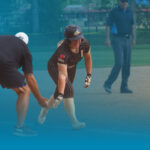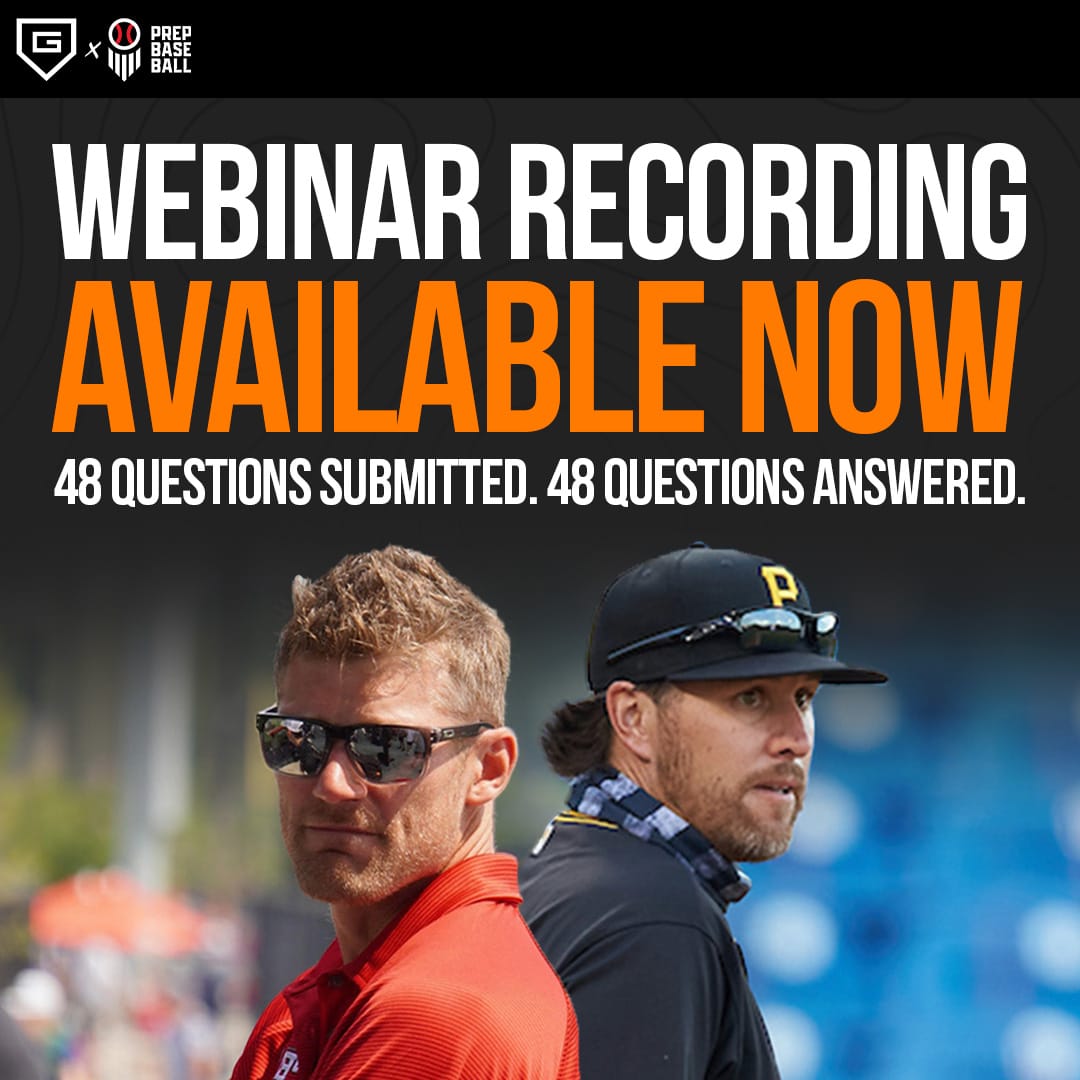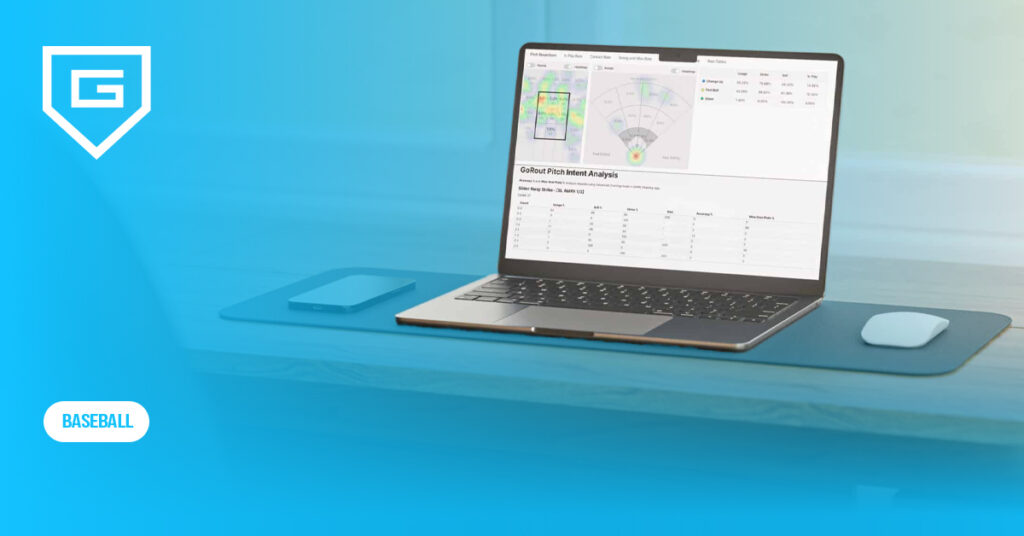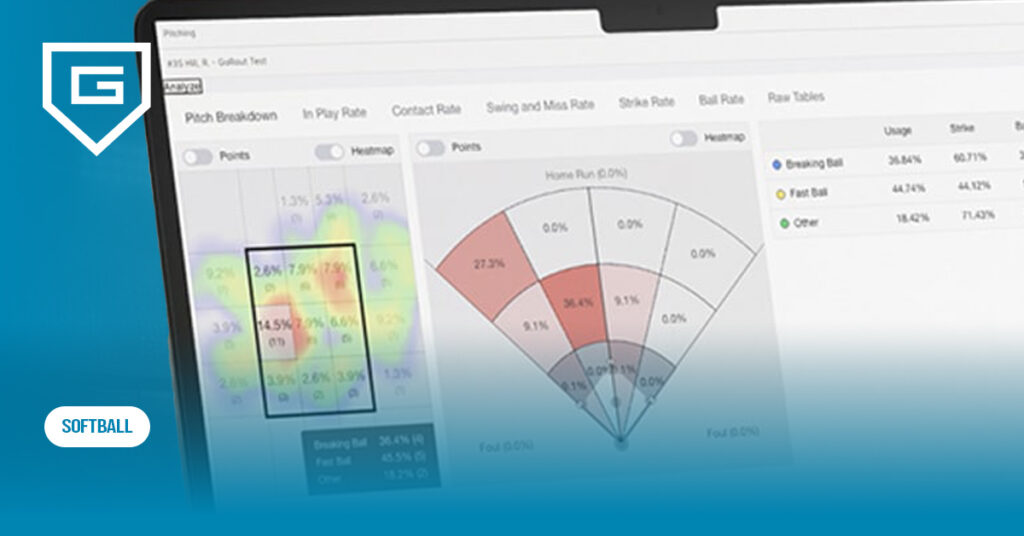Baseball Play Wristbands: Why Switch to Digital and How It Works
Reading Time: 11 minutes
Reading Time: 11 minutes
Baseball is evolving fast these days thanks to new tech advancements. Digital baseball play wristbands are taking over old-school hand signals, letting coaches send plays right to players with a tap.
These digital wristbands display pitch calls on a player’s arm. That speeds up communication, keeps things secure, and cuts down on confusion—especially when the game is on the line.
In today’s article, we will cover the basics of baseball play wristbands and explain how they make communication instant and secure.
We will also show you how advanced tech like GoRout Diamond lets you focus more on strategy and less on whether your players caught the right signal in a noisy stadium.
Summary
Digital wristbands have changed baseball communication, allowing coaches and players to send and receive pitch calls securely.
Electronic pitch-calling wristbands eliminate hand signals, and reduce sign stealing and confusion on the field.
These devices work through one-way electronic communication, where coaches send encrypted signals to players’ wristbands.
NCAA baseball changed the rules and adopted this technology in 2022 to speed up play. NFHS high school baseball also approved digital baseball play wristbands.
Whether your team should go digital may depend on your team’s level, budget and needs.
The GoRout Diamond is the best baseball pitch calling system, known for its reliability and ease of use.
It reduces miscommunication and improves on-field performance.
With an intuitive interface, coaches and players can learn the system quickly to focus on strategy rather than technical issues.
It’s durable, so it can handle the baseball season, making it a great choice for all teams.
It adapts to different game situations and gives real-time data to help teams make smart decisions and speed up players’ development.
Get a quote today or visit the webshop to learn more.
What Are Baseball Play Wristbands, and Why Are They Key?
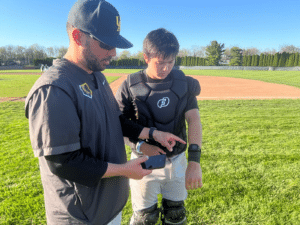
Traditional baseball wristbands are durable bands that display coded information to help players quickly understand coaching signs during practices and games.
They feature a sign system with plays, defensive alignments, and strategies, showing numbers or signals for clear team communication.
Baseball play wristbands help:
- Reduce miscommunication in noisy stadiums
- Eliminate overly complex and hard-to-memorize hand signals
- Secure pitch calls and take away the risk of stolen signs
- Ease the steep learning curve for new players
Catchers benefit the most from wristbands since they’re in constant contact with pitchers. Instead of tricky finger signals, they quickly check their wrist and see the call with clear direction.
Youth teams love them, too. Kids can play without worrying about remembering a bunch of sign sequences when things get tense.
What Types of Baseball Play Wristbands Are Available Today?
Wristbands have come a long way, moving from basic sweatbands to high-tech gear. Right now, you’ll see two main types: classic paper-based wristbands and newer electronic ones.
Traditional paper wristbands
These wristbands typically consist of:
- Plastic sleeve wristbands with paper inserts
- Fabric bands with play card pockets
- Three-window “playbook” style bands
- Single-window quick reference bands
Paper wristbands can hold multiple play cards for organization, allowing teams to quickly switch between strategies without confusion.
Play cards for these wristbands are typically 3.5 inches wide and 2.25 inches tall, so they fit most wristband windows.
Digital baseball play wristbands
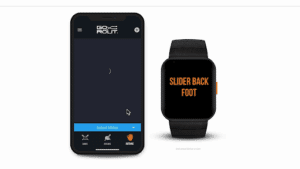
- Baseball communication devices
- Real-time play-calling
- Digital display screens
- Vibration alerts
- Rechargeable batteries
- Real-time performance data
Digital baseball pitch-calling wristbands let coaches send encrypted signals right to players—no hand signs needed. That makes things more secure and less confusing.
Wristbands come in different widths, usually 2-inch or 3-inch, to fit all wrist sizes. There are a bunch of colors (white, black, or other team colors) and materials. You can even customize them with team logos if you want.
How Does a Digital Baseball Play Wristband Work?
Players, usually pitchers and catchers, wear a wristband device to view the signs, while coaches use a transmitter to send signals.
Each wristband has a little display that instantly shows the play or pitches the coach selects.
Coaches send signals through a wireless system, which delivers info securely to the wristbands.
You can now forget:
- Long sign sequences
- Shouting across the field that opponents might overhear
- Guessing or mixed signals
Why Are More Coaches Embracing Technology With Baseball Play Wristbands?
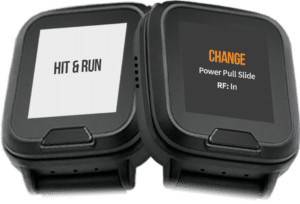
Coaches are making the switch because digital wristbands provide faster and safer communication. It gives your team more:
- Security: Stops sign stealing cold
- Speed: Gets signals to players in a flash
- Clarity: Cuts down on miscommunication
- Flexibility: Lets you call more complex plays
- Efficiency: Keeps the game moving and reduces delays
These advanced baseball coaching tools are nearly impossible to hack. That’s huge in high-pressure moments when you need your message to get through.
College baseball jumped on this, and new rules let pitchers wear these devices. This helped make games smoother and keep teams more in sync.
Should your team upgrade? That depends on your needs and the level you play at, but many coaches are choosing digital for its flexibility and control.
What Features Should You Look for in Baseball Play Wristbands?
When selecting digital wristbands for baseball, prioritize functionality and performance above all else. These tools should improve your team’s communication under pressure without adding complexity.
| Feature | What to Look For |
| Reliability | Devices must work consistently, especially in high-pressure situations. |
| Signal Security | Encrypted communication to prevent opponents from intercepting signals. |
| Display Visibility | Screens should be readable in all weather, including bright sunlight, with brightness control. |
| Response Time | Fast transmission—signals should be sent in milliseconds for real-time decisions. |
| Durability | Water-resistant and rugged enough for sliding, sweating, and weather exposure. |
| Battery Life | At least enough power for a doubleheader; rechargeable batteries are preferred. |
| Ease of Use | Simple interface for coaches and clear instructions for players to reduce errors. |
| Customization | Ability to program specific plays, shifts, and signals to match your team’s style. |
The best baseball play wristbands combine durability, security, and simplicity—ensuring your team stays connected, confident, and competitive no matter the conditions.
How Do You Choose the Right Digital Baseball Play Wristband for Your Team?
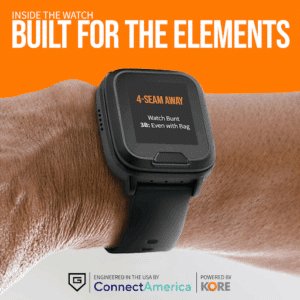
Choosing the right play wristbands for your baseball team isn’t just about picking what looks good. The wristband you select will shape how your players communicate and perform on game day.
Key questions to ask before purchasing
- Does it work with the gear you already use?
- How long does the battery last during a game?
- Can it handle sweat, dirt, and bad weather?
- Is the signal secure enough to keep your plays private?
- How quickly can coaches and players learn to use it?
Compatibility and ease of use really matter with wearable technology for sports. If a system feels clunky or confusing, it just adds stress when you least need it.
Size is a big deal. Wristbands should fit snugly but not cut off circulation—nobody wants to fumble a ball because their wristband is too tight.
It’s smart to check if your preferred model is actually in stock before you get your hopes up. The best ones sell out fast, especially before the season starts, so ordering early is just common sense.
Color might sound trivial, but it’s not. Bright colors stand out under stadium lights, and matching your team colors just looks sharp.
Don’t overlook protective cases when you order. They might seem like an extra, but they’ll save your baseball equipment from getting trashed during away games or rainy days.
Compare prices, but don’t get fooled by the lowest sticker. Think about durability, warranty, and whether you can actually get help if something breaks.
Sometimes, it’s worth paying a bit more for peace of mind.
Why Is GoRout Diamond the Best Baseball Play Wristband In The Game?
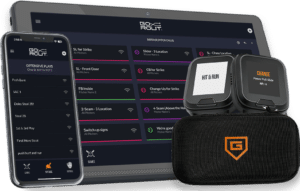
GoRout Diamond has really set itself apart as the go-to coach-to-player communication system. Team communication is seamless, and the customization options are abundant.
With GoRout Diamond, your players never miss a signal during critical moments.
You get 140 characters per message, while others barely give you space for a code. Coaches can send detailed instructions without worrying about running out of room.
Messages go to specific positions, so players only see what matters to them. Pitch calls, defensive shifts, bunts, steals—it’s all just a tap away.
Key features
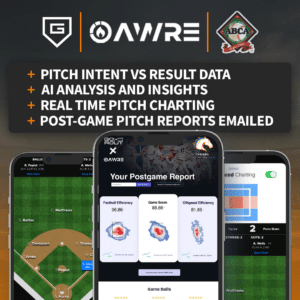
- One-touch messaging to the whole team
- Fully encrypted for privacy
- Weather-resistant for rain or shine
- 4-way privacy screens on every device
- AI analytics with pitch intent vs result data
- Approved for in-game use at several levels
The wearable technology in the sports scene has a clear leader in GoRout Diamond. The devices come ready to go—no complicated setup, no headaches.
This system was built by coaches who get what you need. The interface is so straightforward that making adjustments mid-game feels natural, not stressful.
If you need more gear, it’s easy to add devices as your team grows. Start small or go all in—either way, you can scale up without a hassle.
As one of the best baseball field equipment options, GoRout fits right in with the tech stack you already have. Plus, you can get devices in different colors to match your team’s look.
The analytics are a game-changer. Real-time pitch charting, AI-driven analysis, and pitch intent data let you develop players in ways that weren’t possible before.
GoRout rolls out more than ten updates a year, so your system keeps getting better.
Ready to level up your team?
Get a quote today or visit the webshop to add GoRout Diamond to your cart.
What Materials and Durability Factors Should Coaches Consider?
The best baseball play wristbands use sealed edges and water-resistant materials like silicone or neoprene that keep the electronics safe:
- Moisture-wicking keeps wrists dry
- Flexible for natural movement
- Resistant to rips and fraying
- Quick-dry after rain or sweat
- Antimicrobial to fight odor
Durability is huge—gear gets used aggressively in baseball with a lot of wear and tear. Look for reinforced stitching where wristbands might stretch or tear. Invest in quality, and you’ll save money in the long run.
Batteries shouldn’t die halfway through a doubleheader. The top digital wristbands last through multiple games before you need to recharge.
Screen quality matters, too. Anti-glare displays that stay readable in bright sun are a must, and scratch-resistant coatings help them last.
Adjustable straps or multiple sizes mean everyone on the team can wear one comfortably—no awkward fits.
How Easy Is It to Implement Baseball Play Wristbands in Your Program?

Getting started with baseball play wristbands is easier than most people think. Most teams can get a basic system up and running in just one or two practices.
Start by picking comfortable, easy-to-read wristbands for your players. You’ll want to create a code system—numbers, letters, whatever works for your squad.
Then, gather the team for a quick meeting to:
- Hand out the wristbands
- Walk through the codes
- Practice using signals together
- Let players ask questions
Younger players, especially, love that they no longer have to memorize a bunch of complicated hand signs.
Learning curve by age group:
| Age Group | Typical Learning Time |
| 8-10 years | 1-2 games |
| 11-13 years | 1 game |
| 14+ years | Single practice |
Missed signs are significantly reduced after switching. Having a visual cue helps everyone stay locked in, even when the pressure is on. That gives your team an edge and makes communication a breeze.
What Are Common Concerns About Switching to Digital Wristbands?
Even with all the hype, digital baseball wristbands bring up some real concerns. Teams worry about cost, learning new tech, and whether they’re allowed in their league.
Not every league permits digital wristbands. College baseball is on board, but high school baseball, governed by NFHS, and Little League have different rules about electronic wristbands.
Always double-check your league’s rulebook before buying.
Tech reliability is a big question mark. What if a battery dies in the seventh inning? Or the signal drops? Keeping a set of old-school play cards around isn’t a bad idea while you’re getting used to the new system.
Security is another worry. Digital wristbands are supposed to stop sign stealing, but some coaches still wonder if a tech-savvy opponent could hack the system.
Most brands use encrypted signals, which makes stealing signs way harder than with hand signals.
Some players might push back at first. Kids who’ve always looked to the dugout for signs may need a little time to get used to glancing at their wrists instead.
Batteries and durability in rough weather still worry many coaches considering a digital transition.
Having backup solutions like external battery packs or other power sources can really ease worries about battery life when it matters most.
Cost is a real hurdle for smaller programs. Upfront expenses include:
- Wristbands for everyone
- A control unit for coaches
- Time to train the team
- Replacement costs for lost or broken bands
Fortunately, GoRout Diamond allows you to begin with a small investment and expand as your needs grow, so you can optimize your spending.
What’s the Future of Play Calling in Baseball?
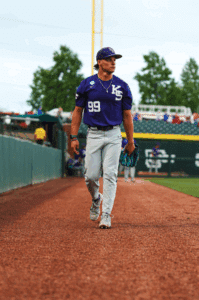
Digital wristbands are about to take over baseball communication—there’s no way around it. Pretty soon, you’ll see them everywhere, from Little League to the pros, as teams look for every edge in security and speed.
Sports coaching technology will keep improving. Advanced wristbands already have:
- Live analytics showing pitch results right on the band
- Biometric tracking to spot player fatigue
- AI-powered play suggestions based on what’s happening in the game
- Wider communication—not just for pitchers, but for every position
Now is a great time to make the switch—early adopters get a head start.
The NCAA’s rule changes opened the door for electronic communication, so you can legally use these at more levels than ever.
With all the worry about sign stealing, teams are leaning hard into encrypted digital systems. Traditional hand signals just can’t keep up.
Coach-to-player communication tech is going to cover everything soon—not just pitching but hitting, fielding, and baserunning, too.
Conclusion About Baseball Play Wristbands
Digital wristbands have changed baseball by replacing confusing hand signals with fast and secure communication.
Teams get faster gameplay, more precise coach-player communication and less sign-stealing. Youth players get simple, reliable instructions, and coaches get pace control.
These systems make learning easier and boost team cohesion.
As adoption grows at the college and pro levels, digital wristbands are no longer optional; they help players focus on the game, not the signs, and give teams an edge.
GoRout Diamond is the best solution, trusted by top programs for speed, security and ease of use. Numerous testimonials and case studies support this claim.
Get a quote or visit the webshop now.
FAQs About Baseball Play Wristbands
Why do baseball players wear wristbands?
Baseball players wear wristbands mainly to get signals from coaches without flashing obvious hand signs.
Pitch-calling devices display instructions right on the player’s wrist, which makes everything faster and keeps the other team guessing.
What materials are best for durable baseball wristbands?
When it comes to wristbands that actually last, these materials top the list:
- Neoprene: Flexible and shrugs off water
- Silicone: Handles heat, cold, and sweat with no problem
- Polyester blends: Comfortable and tough
- Nylon: Super strong and built for the long haul
Good baseball play wristbands have reinforced display windows and sweat-resistant electronics. They can handle diving catches and sliding without falling apart.
How do moisture-wicking properties benefit players’ performance?
Moisture-wicking wristbands pull sweat off your skin and keep your hands and arms dry. That means less slipping when you grip the bat or ball.
Players get better temperature control and don’t have to deal with annoying chafing. The best baseball play wristbands also use moisture management tech to protect the electronics inside.
How do wristbands enhance grip stability during high-impact plays?
Wristbands help steady your wrist during swings and throws. They soak up vibration and cut down on fatigue.
This extra support matters for catchers making throw after throw or batters swinging for the fences. Some players even say they feel more confident knowing their wrist stays in the right spot.
Can wristbands support injury prevention for repetitive wrist motions?
Wristbands give a bit of compression, which can boost blood flow. They also take some strain off your tendons.
This little bit of support might help prevent some overuse injuries. Plus, having a wristband on can remind players to keep good form, especially when they’re pitching or batting over and over.
But let’s be real—wristbands aren’t a magic fix. You still need solid technique, proper training, and sometimes even medical-grade support if you’re dealing with real injuries.

